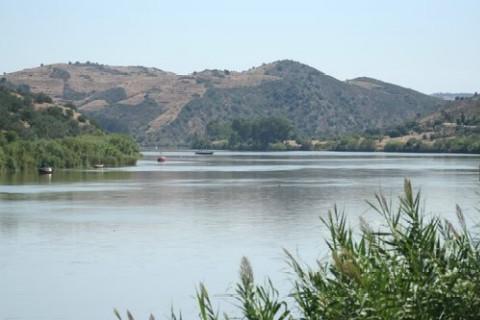can anyone explain how tide works on rivers...
|
|
Hi all
I was born and raised on an Island in the baltic sea, where I learnt to sail in my optimist when I was a kid. Later I´ve sailed mostly there. Thats No-tide waters. Water may go up and down and you may have currents, but not because of tide but because of wind pushing the water around. So now I´m in a tidal area. Southwestern Spain. We have some 2,5 - 3,5 meters of tide depending on the moon etc. On the seaside, its easy to follow. A little more than 6 hours up and down with less currents in the extremes. Very normal and we also have tide tabels saying more or less when and how much. But. We have some pretty nice rivers. The river Guadiana is very pretty and not to far from me. Sanlucar de Guadiana is some 22 nautical miles from the sea. There I havent got acces to a tide table. My observations are and I may be wrong because I´ve only been there twice: The highwater (is it called that) is about 2 hours later than 22Nm downstream. There isnt any "calm current" at high or low water. It more or less just changes. I have a feeling that the period of raising and lowering are not the same length but I´m definately not sure about that... I know that many of live with very strong tides and that you also sail on rivers, so maybe you can fill in with some of your knowledge, because I feel pretty lost. I did, of course, ask in the local bar.. Be he didnt have a clue and didnt care.  
|
|
|
That river looks beautiful. I'm up for a rally there! There will be many more experienced than I at tidal calculations. All I can say is that your observations are sound. High tide up-river will run later than at the coast and you won't observe much, or any, 'slack-water' time at the top or the tide. As for whether incoming tide takes longer than outgoing I have only my own observations and deductions. I believe the outgoing tide appears to last longer. That is because the natural flow of the river is out to the sea and any 'slack time' between tides is therefore a period of flow downriver. This creates the appearance of there being more outgoing than incoming tide. I await more learned observations! Tim. From: "Anders [via UK HBBR Forum]" <[hidden email]> Subject: can anyone explain how tide works on rivers... |
|
|
I think it must depend on the river and how far from the sea it remains tidal. On the River Authie near my house the flow is upstream from around 2 hours before HW at the river mouth until about 15 minutes after HW time. The rest of the time the flow is downstream at rates ranging from 5 knots to negligible.
This is only about 4 kilometres upstream from the sea, where tidal range can be up to 9m. I think the reason no flood tide is evident until 2 hours before HW is that the tide goes out so far at the river mouth it exposes miles of gently sloping sandy beach. No tidal water can come up the river until the level is high enough to cover the sand at the river mouth. Other rivers will have different geography so results must vary accordingly. |
|
|
In reply to this post by Timmo
Timmo.
I´m glad to see that my observations can be called sound, because I´m very "green" in this aspect. The river is very nice and an interesting thing is that its a border river between Spain and Portugal and on the other side of the river, just opposite Sanlucar there´s another little white village (portugese) with a few shops, bars etc. There are many very nice places down here. The problem is that its not specially nice in summer because its to hot. Yesterday we had 40 degrees celcius and that is way to hot. Its a wonderfull region in may when everythingt is lush and pretty warm or in late september, start october when its all cooled down a bit. I will try to post some photos of this place and others down here when it cools down a bit. Frogsider: The river I´m talking about has at least 30Nm of tidal flow. Thats some 54 km and it will, of course, be different in different places. I´m just trying to understand what tide in a river is... |

|
gregandginas |
Re: can anyone explain how tide works on rivers...
|
|
A minor point on tidal rivers: as freshwater is less dense than saltwater... the river water can be flowing out on the surface (especially if being helped along by a good breeze) even if the tide is rising!
We've experienced quite significant out-going current on the Yare at Reedham an hour after the listed low-water point: I'm suspecting that the tide was held up due to several days of very strong off-shore winds... but I'm told that the tide could have been coming in quite quickly underneath the surface-level currents that mattered to us! More generally, there's a bit to be learnt at http://www.norfolk-broads.org/tides/broadstides.asp |

|
Chris Waite |
Re: can anyone explain how tide works on rivers...
|
|
Seems everyone has the right sort of ideas and observations
The river Arun here in West Sussex is now the fastest flowing in England (sometimes 5 knots easily); there was apparently one faster but civilization caught up with it and it has now been taught a lesson in good behaviour. The Arun is also tidal for some 22 miles (around 35 Km) inland near to the town of Billingshurst, where there was once, for a short while, a canal that connected it to the river Wey, a tributary of the Thames. This was to allow passage of gunpowder and bullion from London to the main naval base at Portsmouth and as soon as it was built, along came the steam train and rendered it obsolete. Anyway, simply put, (so no quibbling about the details or quote exceptions): 1. There is a stream of water flowing out of a river which depends on rainfall. 2. If the mouth empties into tidal water then as the tide rises, so it will raise the level at which the river water reaches the advancing seawater. Depending on the geography, this will have the effect of moving that point further up the river until the tide starts to go out, when the situation reverses. 3. In practice this means the tide in such rivers really does come and go, but because the river is flowing it 'goes' for longer than it 'comes'. Here at Arundel for instance, in each twelve hour(ish) tidal cycle it comes in and the level rises for only about four hours and spends the next eight flowing downstream with the level dropping. 4. What you actually get is a tidal 'surge' travelling upstream, so that you can start with the first of the tide at the mouth and be carried well up stream all on one tide. Extreme examples of this are funnel shaped mouths (estuaries) where the tide pushes up so violently it forms a wave(s), or bore which in the case of the English river Severn is quite famous for the surfers who ride it miles upstream. Consider that it is a mass of water slopping back and forth. There is such a phenomenon at least as amazing on the river system around Bordeaux, the Garonne/Gironde (??) 5. The above kind of explains why there is very little 'stand'; the system is too busy. In fact the level on the Arun starts to drop, before the (surface?) water begins to turn down stream. 6. Finally, here anyway, the top of the tide is quite predictable to within half an hour at points up the river - Arundel an hour after Littlehampton at the mouth and four hours at Pulborough much further up. However, the time of low water is so variable as to be guesswork as it depends not only on the amount of rain in the river itself, but whether it is a 'spring' or 'neap' tide (whether the sun and moon are working in conjunction/opposition, or at ninety degrees to each other), also on the local barometric pressure. That is best demonstrated by the low pressure storm surge created by a hurricane for instance. And that's about it for my version Chris W |
|
|
Ok, thanks again
I´m starting to get an idea of this tide and rivers thing. I can see that there´s so many different rivers and therefor rivertides that I´ll have to learn to know my river. But your posts surely helps, and I´m glad that my own observations seem to be going in the right direction. |
«
Return to General Discussion
|
1 view|%1 views
| Free forum by Nabble | Edit this page |
